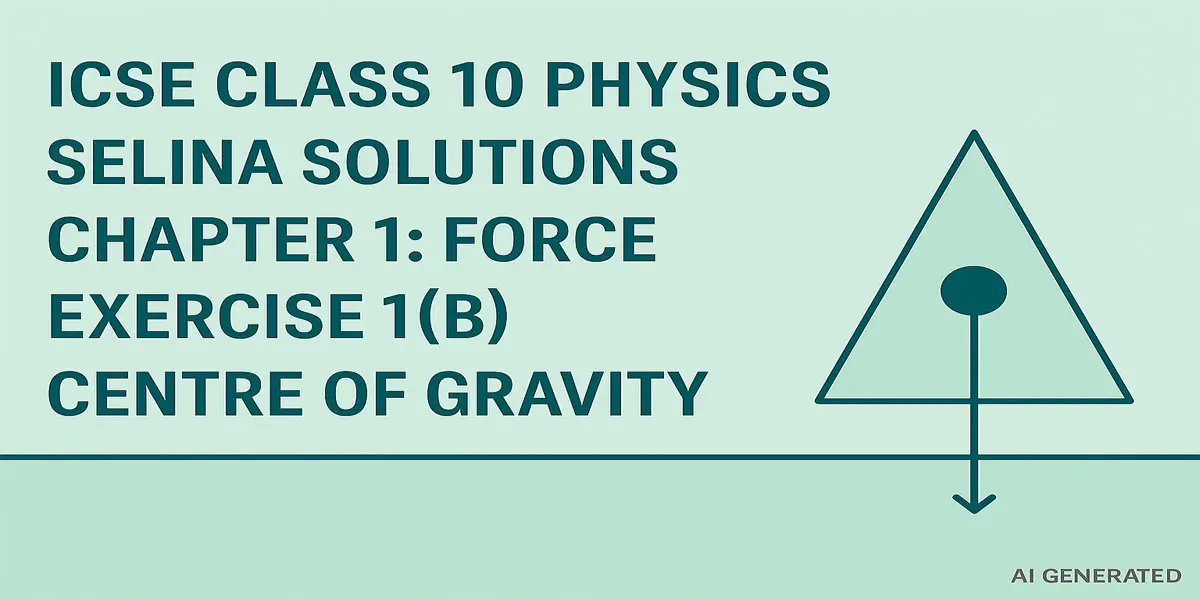Introduction
Struggling with ICSE Class 10 Physics Selina Solutions Chapter 1 Force Ex 1B? Look no further! Our Selina Concise Physics Class 10 Force Exercise 1B Solutions provide clear, step-by-step answers to help you master the concept of centre of gravity and excel in your ICSE exams. Selina Concise Physics is a go-to resource for ICSE students, and Chapter 1: Force introduces key concepts like the centre of gravity, which is covered in Exercise 1(B). Download our free PDF and start preparing today!
What is Covered in Selina Physics Class 10 Chapter 1 Force Exercise 1(B)?
Exercise 1(B) focuses on the centre of gravity, a critical concept in physics that explains the point where the entire weight of a body acts. Key topics include:
- Definition of Centre of Gravity: Understanding its role in balancing objects.
- Factors Affecting Centre of Gravity: Shape, size, and mass distribution.
- Examples: Centre of gravity of common objects like a ring, triangle, or lamina.
- Numerical and Descriptive Questions: Applying concepts to solve problems.
Our ICSE Class 10 Force Selina Solutions Centre of Gravity simplify these topics with easy explanations and exam-oriented answers.
Selina Questions and Solutions from Exercise 1(B)
Here are questions from Selina Concise Physics Class 10 Force Exercise 1B with concise solutions to give you a head start:
(A) Multiple Choice Type : Exercise 1(B)
(Choose the correct answer from the options given below).
Question 1
With respect to centre of gravity, which of the following statements are correct?
(a) The position of centre of gravity depends on its shape.
(b) It is not necessary that the centre of gravity of a body should always be within the material of the body.
(c) A body of weight W can be considered as a point particle of weight W at its centre of gravity.
(d) All of the above
Answer:
(d) All of the above
Explanation: All statements are scientifically correct and describe key properties of the centre of gravity.
Question 2
The centre of gravity of a body is the point about which the algebraic sum of moments of weights of all the particles constituting the body is:
(a) 1
(b) > 1
(c) < 1
(d) 0
Answer:
(d) 0
Explanation: At the centre of gravity, the net moment of all the individual weights about it is zero.
Question 3
The centre of gravity of a uniform ball is
(a) at its geometrical centre
(b) at its bottom
(c) at its topmost point
(d) at any point on its surface
Answer:
(a) at its geometrical centre
Explanation: The centre of gravity (C.G.) lies at the centre of the sphere, which is also the geometrical centre.
Question 4
The centre of gravity of a hollow cone of height \(h\) is at distance \(x\) from its vertex where the value of \(x\) is:
(a) \(\frac{h}{3}\)
(b) \(\frac{h}{4}\)
(c) \(\frac{2h}{3}\)
(d) \(\frac{3h}{4}\)
Answer:
(c) \(\frac{2h}{3}\)
Explanation: The centre of gravity of a hollow cone is at a height \(\frac{h}{3}\) from the base.
Hence, from the vertex the height is :
\(h\ −\ \frac{h}{3}\ =\ \frac{3h\ −\ h}{3}\ =\ \frac{2h}{3}\)
Question 5
Where should the centre of gravity of a body be located for stable equilibrium?
(a) above the base
(b) near the geometric centre
(c) can be anywhere
(d) both (a) and (b)
Answer:
(d) both (1) and (2)
Explanation: For stable equilibrium, the centre of gravity should be low and centrally located.
(B) Very Short Questions : Exercise 1(B)
Question 1
Can the centre of gravity of a body be situated outside its material of the body? Give an example.
Answer:
Yes, the centre of gravity of a body can be situated outside the material of the body.
For example, the centre of gravity of a ring or a hollow sphere lies at its centre where there is no material.
Question 2
What is the position of centre of gravity of a:
(a) rectangular lamina
(b) cylinder?
Answer:
(a) Rectangular Lamina: The center of gravity is at the intersection of its diagonals.
(b) Cylinder: The center of gravity lies at the mid point of the axis of cylinder.
Question 3
At which point is the centre of gravity situated in :
(a) A triangular lamina and
(b) A circular lamina?
Answer:
(a) Triangular Lamina: The center of gravity is at the centroid, where the medians intersect.
(b) Circular Lamina: The center of gravity is at the geometric center of the circle.
Question 4
Where is the centre of gravity of a uniform ring situated?
Answer:
The centre of gravity of a uniform ring is located at the geometric center of the ring.
Question 5
State whether the following statements are true or false.
(i) ‘The position of centre of gravity of a body remains unchanged even when the body is deformed’.
(ii) ‘The centre of gravity of a freely suspended body always lies vertically below the point of suspension’.
Answer:
(i) False
(ii) True
(C) Short Questions : Exercise 1(B)
Question 1
Define the term ‘centre of gravity of a body’.
Answer:
The centre of gravity of a body is defined as the point about which the algebraic sum of moments of weights of particles constituting the body is zero and the entire weight of the body is to act at this point.
Question 2
State a factor on which the position of centre of gravity of a body depend? Explain your answer with an example.
Answer:
The position of the centre of gravity of any body will depend on the shape or distribution of mass of the body. It changes if the shape of the body is deformed.
For example, the centre of gravity of a uniform wire is at the middle of its length. But if the same wire is bent into the form of a circle, its centre of gravity will then be at the centre of the circle.
Question 3
A square card board is suspended by passing a pin through a narrow hole at its one corner. Draw a diagram to show its rest position. In the diagram mark the point of suspension by the letter S and centre of gravity by the letter G.
Answer:
The diagram is shown below:
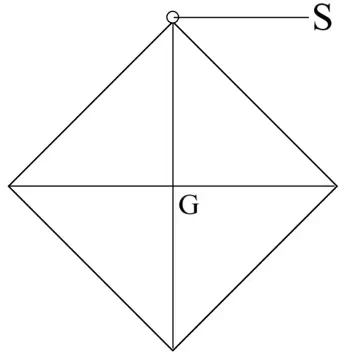
Question 4
Humans bend forward when they carry a heavy load on their back. Give reason.
Answer:
Humans bend forward when carrying a heavy load on their back to maintain balance and stability. The heavy load shifts the body’s center of gravity backward and upward. By leaning forward, the person moves their center of gravity closer to its natural position over the feet, reducing the risk of falling backward and making it easier to stabilize and walk. This posture also engages the stronger core and leg muscles to support the added weight.
Question 5
You are assigned to look after a loading of a cargo ship with containers marked A and B. The A type containers are 50% more heavier than B type containers. What precaution would you take and why so that the ship sails smoothly even in rougher seas?
Answer:
- Place heavier Type A containers at the bottom of the stack and lighter Type B containers on top to lower the ship’s center of gravity.
- Avoid concentrating heavy containers in one area.
Question 6
A uniform flat circular rim is balanced on a sharp vertical nail by supporting it at a point A, as shown in figure. Mark the position of centre of gravity of the rim in the diagram by the letter G.
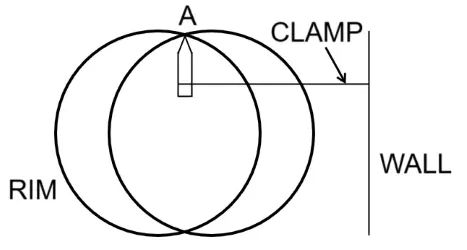
Answer:
The position of centre of gravity of the rim is marked by the letter G in the below diagram:
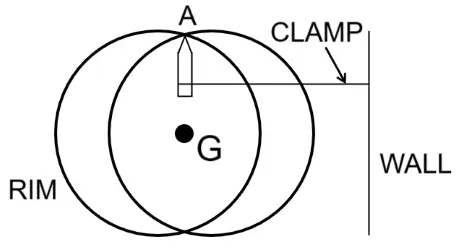
Question 7
Figure shows three pieces of card board of uniform thickness cut into three different shapes. On each diagram draw two lines to indicate the position of centre of gravity G.
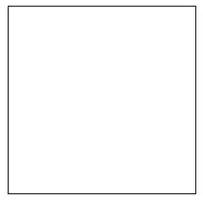

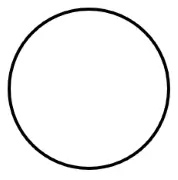
Answer:
The position of centre of gravity G for the three pieces of card board are marked in the below diagrams:
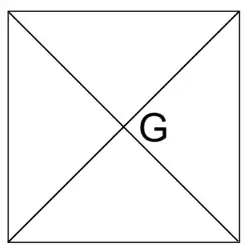
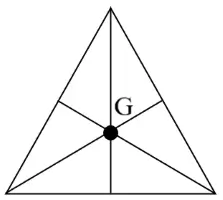
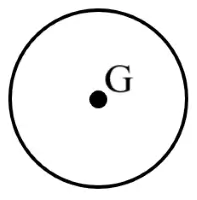
(D) Long Questions : Exercise 1(B)
Question 1
Explain how you will determine experimentally the position of centre of gravity for a triangular lamina (or a triangular piece of card board).
Answer:
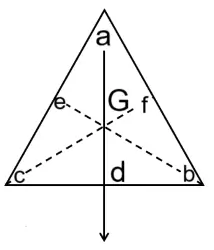
To experimentally determine the center of gravity of a triangular lamina (e.g., cardboard):
- Suspend the lamina from one vertex using a pin, allowing it to hang freely.
- Hang a plumb line (string with a weight) from the pin and mark its vertical path on the lamina (this traces a median).
- Repeat the process from a second vertex, marking another median.
- The intersection of the two marked lines is the center of gravity (centroid).
- Optionally, verify by suspending from the third vertex or balancing the lamina at the intersection point
Download Free ICSE Class 10 Force Exercise 1B Solutions PDF
Get your Selina Physics Class 10 Chapter 1 Force Ex 1B Answers in a free PDF format. Click below!
Why Choose Our Selina Concise Physics Class 10 Ex 1B Solutions?
- Step-by-Step Answers: Detailed solutions for all questions in Exercise 1(B).
- Concept Clarity: Simplified explanations of centre of gravity concepts.
- Exam-Ready: Includes ICSE Class 10 Physics Centre of Gravity Questions and Answers with MCQs and practice questions.
- Free PDF Download: Access Selina Physics Class 10 Ex 1B Force Free PDF Download anytime.
- Aligned with ICSE Syllabus: Covers all topics tested in the board exams.
Tips to Master ICSE Class 10 Physics Chapter 1 Force Ex 1B
- Learn Definitions: Memorize the definition of centre of gravity and its significance.
- Understand Examples: Study the centre of gravity for objects like a ring, triangle, or lamina.
- Practice Questions: Solve all questions in ICSE Class 10 Force Exercise 1B Practice Questions to build confidence.
- Use Notes: Refer to our Selina Concise Physics Class 10 Centre of Gravity Notes for quick revision.
- Test Yourself: Attempt ICSE Class 10 Physics Chapter 1 Force Ex 1B MCQs to assess your preparation.

